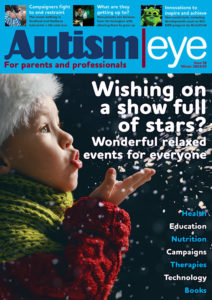Early years settings can help autistic pupils to develop their communication and language skills with Widgit’s Early Years Pack of symbolised resources.
The children currently in Reception were small babies when the first lockdown was announced in 2020.
For those vital months when they were acquiring language skills, the only people who spoke to them were their immediate family. With the normal mix of people and places that make up a child’s first years missing, the consequences for their development have been far-reaching.
According to a study published by the Education Endowment Foundation, 96 per cent of schools expressed significant concerns over the communication and language development of post-Covid Reception cohorts.
A Coram Family and Childcare report went further, finding that Covid left early years children unable to adapt to new situations, socialise and develop self-regulation skills.
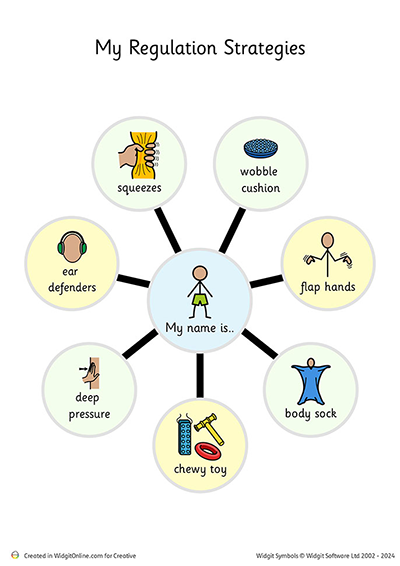 When children are dysregulated, they often struggle to understand the difference between feeling nervous because they are excited and feeling nervous because they’re scared or threatened. If they lack the language skills they need to express themselves, they will no doubt find an unfamiliar early years classroom bewildering, frustrating, and anxiety-inducing—not a great starting point for developing the foundations of learning.
When children are dysregulated, they often struggle to understand the difference between feeling nervous because they are excited and feeling nervous because they’re scared or threatened. If they lack the language skills they need to express themselves, they will no doubt find an unfamiliar early years classroom bewildering, frustrating, and anxiety-inducing—not a great starting point for developing the foundations of learning.
This is more keenly felt by neurodiverse children, particularly those who are autistic. There is a chance they may feel even more overwhelmed and struggle with verbal communication when starting school anyway, regardless of whether they were born during the Covid pandemic or not.
However, with the help of Widgit Symbols, early years settings are supporting autistic children in developing their self-regulation and communication skills so their confidence will blossom in the classroom and at home.
Widgit Symbols
Widgit Symbols are simple illustrations of everyday objects, concepts and ideas that can be used to boost children’s speech, language and understanding.
The symbols make up a visual language, which helps autistic people and those with speech and language difficulties to communicate more easily.
The symbols also give children a voice so they can say that they’re feeling shy for example, or ask for their comforter.
Widgit has launched their Early Years Pack full of symbolised resources for early years settings, together with their accompanying report How to build confident early learners.
These resources help teachers to support the learning and communication needs of early years pupils with additional needs, including autistic children.
Here are some best practice ideas from early years teachers and speech and language professionals on how Widgit Symbols and other visual aids can be used to give young children the best possible start.
1. Start at home, bringing parents on board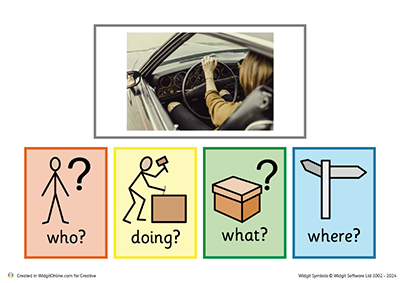
Introducing new concepts in a new environment is doubly challenging for early years children, especially those who are autistic or have special educational needs. They are being asked to absorb new information in a setting that, due to being unfamiliar, is inherently distracting and anxiety-inducing.
By contrast, children feel most comfortable at home as it is the place they know best.
Parents can use family photos and Widgit Symbols to stimulate conversation at home. A picture of Mummy driving the car or Daddy at the beach will immediately pique a child’s interest. Then families can use the symbols to start a simple conversation about what is happening in the photos.
Early years teachers can continue the discussion in class, asking questions, such as “What is Mummy doing?” or “Where is Daddy?” and showing the same pictures of the child’s parents or carers.
This encourages children to construct short sentences about familiar people and common activities. It also develops a habit of conversation, which is the bedrock of literacy.
2. Introduce visual timetables
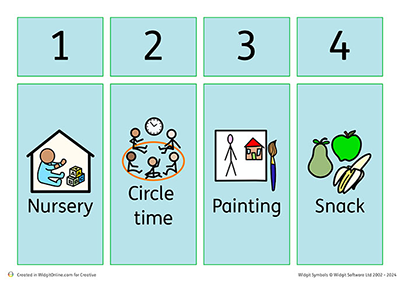 Arriving in an early years setting as a child with limited communication skills can feel like being parachuted into a foreign country with an unfamiliar culture and a language you don’t understand.
Arriving in an early years setting as a child with limited communication skills can feel like being parachuted into a foreign country with an unfamiliar culture and a language you don’t understand.
Routines that seem obvious to adults, such as washing hands before snack time or tidying toys away before story time, can feel completely alien.
A visual timetable uses simple and easily decodable images to show children what is going to happen during the day.
These can include specific activities, such as circle time or outdoor play, or constituent parts of one activity, such as washing hands and then eating a snack.
These visual timetables are then sent home to families, to help children prepare for the day ahead. That way, children know that when they arrive at nursery, there will be circle time and then painting, for example.
This helps to make the day predictable and comprehensible – which reduces children’s anxiety. And any time they feel confused about what’s going on during the day, they can simply glance at the visual timetable and feel reassured.
3. Explain emotions using storybook characters
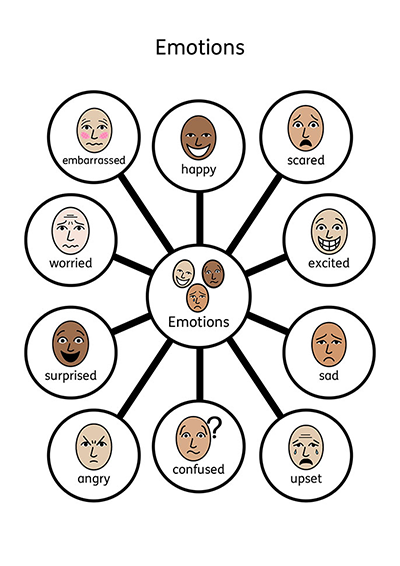 Children with undeveloped language skills can easily feel overwhelmed in a new setting, which can lead to dysregulation.
Children with undeveloped language skills can easily feel overwhelmed in a new setting, which can lead to dysregulation.
Often, they can’t understand the emotions they’re experiencing or name these emotions, so that they can ask staff for help.
Early years practitioners can use storybook characters and symbolised stories to initiate conversations about emotions that children might experience in daily life to help them learn the right vocabulary and coping strategies to use.
For example, they might ask, ‘How did the Billy Goats Gruff feel when the troll said he would gobble them up?’
Once an emotion has been named alongside a visual representation of that feeling, staff can then ask questions such as, “What would make Baby Bear feel better?” or “What could Goldilocks have done instead?”
This opens up a conversation about how children can also manage difficult emotions.
Using the symbol with the spoken word makes feelings easier to understand, recognise and share.
From there, it becomes easier to move on to questions such as, “Can you think of a time when you were feeling scared like Red Riding Hood?”
Staff can then suggest a coping strategy with visual prompts such as: “When we’re feeling like that, we can do this.”
The more children are able to express themselves, process their emotions, and feel in control of what’s happening around them, the better they will be at regulating their behaviour and becoming confident learners.
Wealth of resources
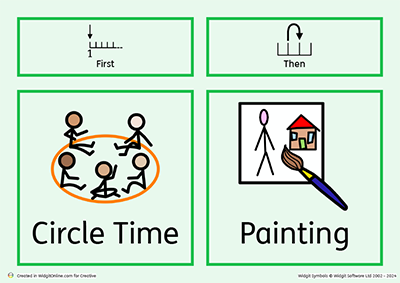 Widgit’s Early Years Pack and Early Years Guide provide early years settings with a wealth of resources to help ensure autistic children are supported to learn, progress and thrive inside and outside the classroom.
Widgit’s Early Years Pack and Early Years Guide provide early years settings with a wealth of resources to help ensure autistic children are supported to learn, progress and thrive inside and outside the classroom.
For more information and to get a free trial of Widgit Online and the Early Years Pack, please click here.


















